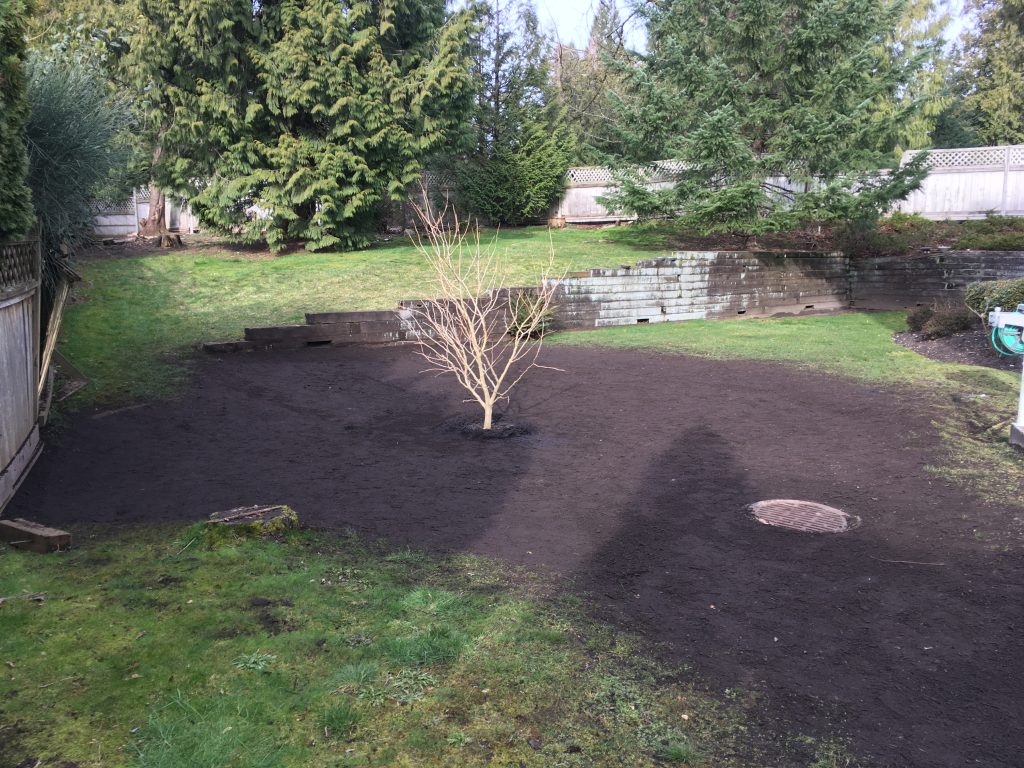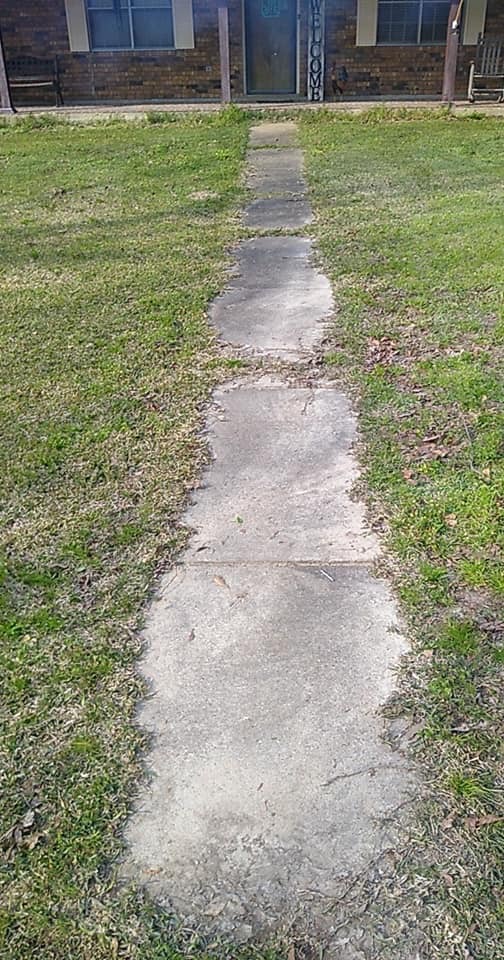I love it when I get to detour from regular landscape maintenance duties and work on a different project. For example, just last week I got to patch up a sinking hole in the lawn. There was a depression in the lawn and nobody was sure why. So, we fixed it in a few hours.
Access
How do you move several yards of lawn and garden mix soil into an area with lousy wheelbarrow access? Well, you make a phone call and you get the soil blown in. And that’s what happened.
We took advantage of a hole in the fence and ran the soil hoses through there. Fortunately, it was on a Monday morning and the worshippers were long gone. I’m not even sure if the new coronavirus allowed them to meet on Sunday.
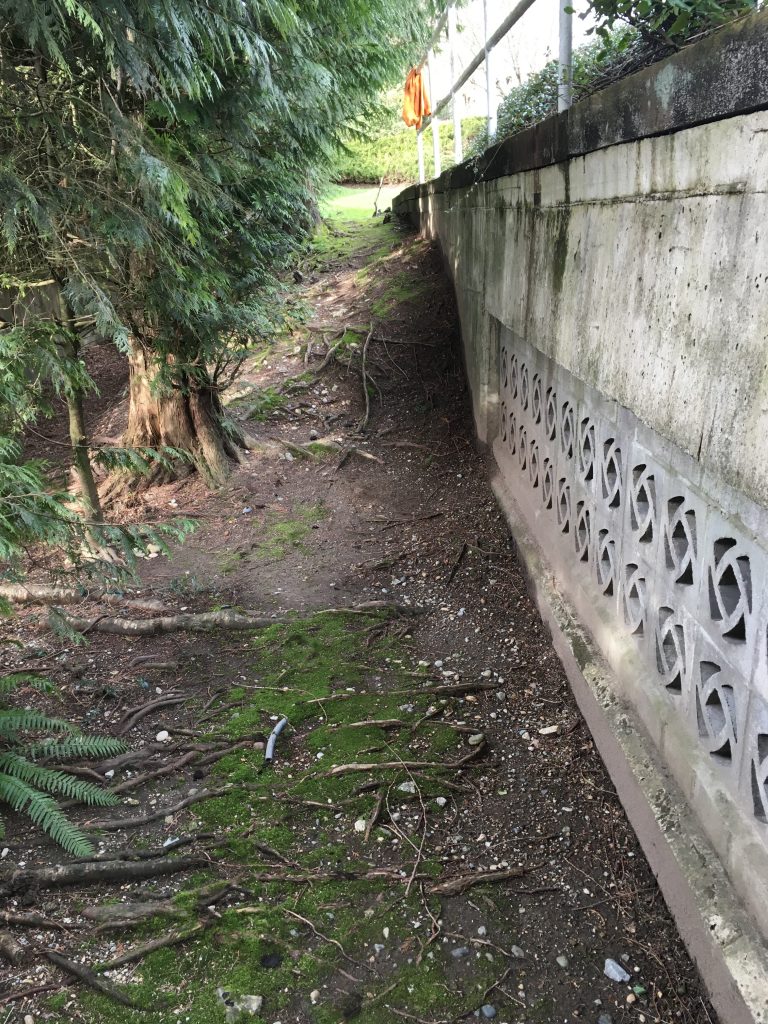
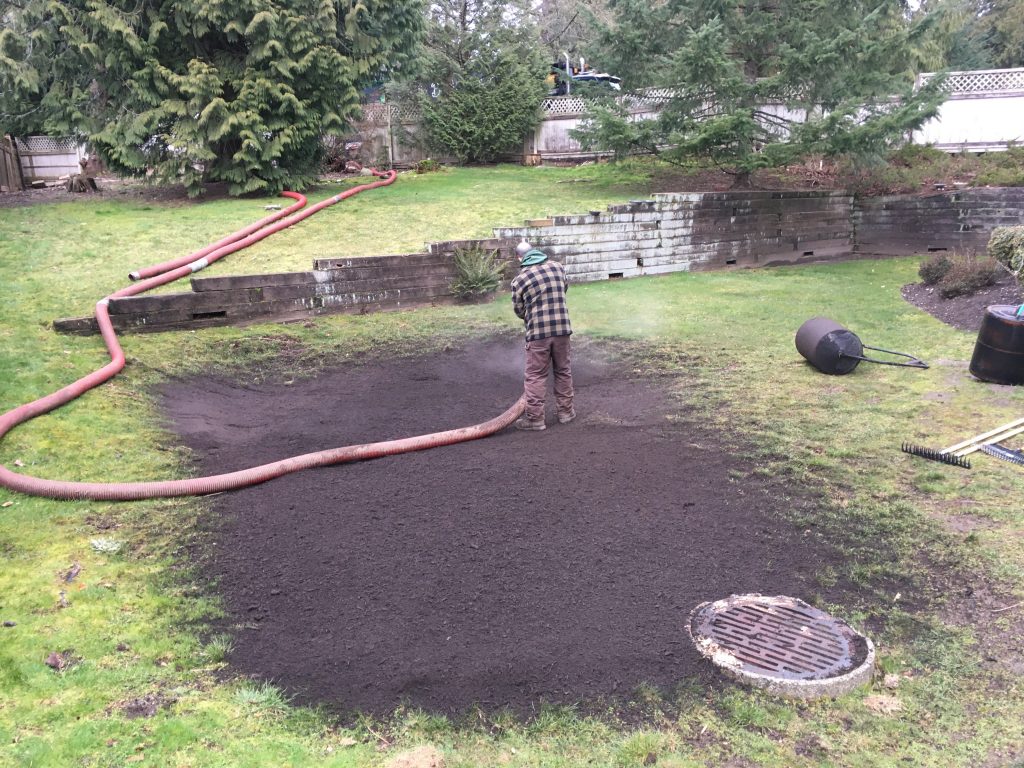
Rolling it!
Now, it was important to roll the new soil as it was blown in so I danced with the operators. While I rolled the left side, they blew in soil on the right. Then we switched sides. And so on.
Yes, landscaping is a physical job; rolling a pin full of water to flatten soil is heavy labour. I was sweating under my toque and smiled about the very real possibility of weight loss.
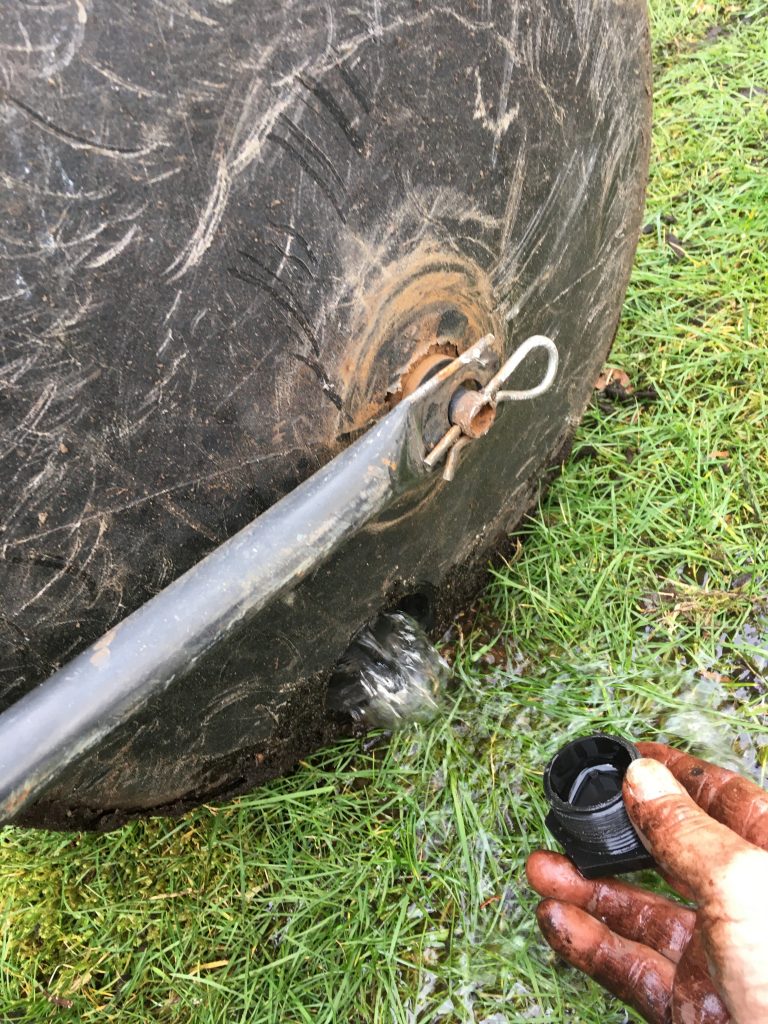
Ginkgo
It wasn’t my idea to move a Ginkgo tree into the middle of the new depression-free lawn. I would prefer to re-plant it into native site soil, not into brand new lawn and garden mix.
So, we preserved as much of the root ball as we could and we plugged it in. Of course, this is a shock for the tree so it’s important to water it in gently with a slow soak.
Last step
Once temperatures go up high enough for grass seed to germinate, this lawn area will get hydroseeded. Hydro seeding is a faster and cheaper alternative to sod install. And it works well. Soon we’ll have a new lawn area to mow and it will be easier to maintain without the freaky depression.
The lesson here is that you can get around lousy site access by blowing soil in and hydroseeding. You will have to supply some labour.
